Ski: 2023-2024 Line Blade Optic 114, 186 cm
Test Location: Crested Butte Mountain Resort, Colorado
Days Skied: 8
Available Lengths: 178, 186, 192 cm
Blister’s Measured Tip-to-Tail Length (straight-tape pull): 185.2 cm
Stated Weight per Ski (186 cm): 2350 grams
Blister’s Measured Weight per Ski: 2322 & 2318 grams
Stated Dimensions: 139-114-132 mm
Blister’s Measured Dimensions: 138.3-113.4-130.9 mm
Stated Sidecut Radius (186 cm): 24 meters
Measured Tip & Tail Splay (ski decambered): 65.5 mm / 47.5 mm
Measured Traditional Camber Underfoot: 1.5 mm
Core Materials: aspen + partial titanal layer + fiberglass laminate
Base: sintered “Fatty” (1.7 mm)
Factory Recommended Mount Point: -7.8 cm from center; 85.2 cm from tail
Boots / Bindings: Atomic Hawx Ultra 130 S GW / Tyrolia Attack 13
[Note: Our review was conducted on the 22/23 Blade Optic 114, which returns unchanged for 23/24, apart from graphics.]

Intro
Line introduced a new family of skis for the 22/23 season, the Blade Optics, and several of our reviewers were immediately big fans of these skis. Effectively replacing the Sick Day series (though the women’s Pandora skis are still around), the metal-laminate Blade Optics brought some more suspension and stability to the table while also retaining a lot of playfulness and maneuverability that’s characteristic of many of Line’s skis. (See our video with Line, below, for the whole backstory of the collection.)
We’ve already posted our Full Reviews and Deep Dive comparisons for the Blade Optic 92, Blade Optic 96, and Blade Optic 104, but now it’s time to discuss the widest ski in the series, the Blade Optic 114.
We’ve been spending time on the Blade Optic 114 since the 2022 Blister Summit, and it’s proven to be a bit of an outlier in the series, but before we get into its on-snow performance, let’s take a look at the details of this big-mountain powder ski.
What Line says about the Blade Optic 114
“For the deepest of days, experience freeride through a different lens.
For the guys and gals setting their sights on storm days and endless in-bounds powder laps, the Blade Optic 114 is here to answer the call. Equipped with our Gas Pedal Metal Overdrive™ technology, paired with a refined rocker profile, attuned tapering, and functional waist width, the Blade Optic 114 is a super stable stomp stick that will float through the deepest of deep and plow through crud. Kick it into overdrive and experience freeride through a new lens on the Blade Optic 114.”
Construction
Like the other Blade Optic skis, the Blade Optic 114 features an aspen core, fiberglass laminate, and Line’s “Gas Pedal Metal Overdrive.” Essentially, that’s a layer of titanal that extends edge-to-edge underfoot, but tapers to a point as you move toward the tips and tails, and features cutouts throughout with the goal of getting some of the benefits of a full sheet of metal, but without hampering energy or the “releasability” of the tips and tails.
The Blade Optic 114 also come with Line’s extra-thick 1.7 mm “Fatty” sintered base, and their 2.5×2.2 mm “Fatty” edges, which should help when it comes to long-term durability.
Shape / Rocker Profile
The Blade Optic 114 looks a lot like the Blade Optic 104, with a few exceptions. Most notably, the Blade Optic 114 has a straighter shape with less sidecut. It’s also got slightly deeper rocker lines than the narrower Blade Optics (no surprise there). Overall, it features a bit of early tapering at the tips and tails, but not a drastic amount, while its tip and (more notably) tail rocker lines are pretty deep. It doesn’t quite have a full-on twin tip, but it has enough tail splay to land switch in most conditions (as Line’s athletes have proven time and again).
Flex Pattern
Here’s how we’d characterize the flex pattern of the Blade Optic 114:
Tips: 6-6.5
Shovels: 7-8
In Front of Toe Piece: 8.5-10
Underfoot: 10
Behind the Heel Piece: 10-9.5
Tails: 9-7
Overall, the Blade Optic 114 is much stiffer than the other skis in the Blade Optic series, especially at its tips and tails. For a somewhat playful pow ski, it’s pretty strong overall, though its flex pattern is fairly round / symmetrical.
Sidecut Radius
At 24 meters for the 186 cm length we’ve been testing, the Blade Optic 114’s stated sidecut radius is considerably longer than the narrower Blade Optic skis. It’s not absurdly long by any means, but it’s longer than a lot of freestyle-oriented powder skis.
Mount Point
The Blade Optic 114’s recommended mount point is about -8 cm from true center. That’s closer to center than some very directional skis, but not as centered as most freestyle-oriented pow skis.
Weight
The 186 cm Blade Optic 114 weighs a little over 2300 grams per ski, which is pretty heavy for its class. There are heavier skis (e.g., Rossignol Blackops 118), but the Blade Optic 114’s weight, sidecut radius, and flex pattern all add up to a ski with the potential for solid composure at high speeds in variable snow.
For reference, here are a number of our measured weights (per ski in grams) for some notable skis. Keep in mind the length differences to try to keep things apples-to-apples.
1710 & 1744 Atomic Bent Chetler 120, 184 cm (18/19–22/23)
1808 & 1809 Line Pescado, 180 cm (16/17–22/23)
1833 & 1894 Head Kore 111, 184 cm (22/23)
1863 & 1872 Atomic Bent 110, 188 cm (22/23)
1873 & 1878 Line Vision 118, 183 cm (20/21–22/23)
1870 & 1895 Faction La Machine Max, 186 cm (20/21–22/23)
1885 & 1914 Moment Wildcat Tour, 190 cm (21/22-22/23)
1897 & 1913 Majesty Vanguard, 188 cm (20/21)
1895 & 1906 Folsom Trophy Carbon, 188 cm (18/19–22/23)
1910 & 1941 Scott Scrapper 115, 189 cm (17/18–20/21)
1921 & 1927 Fat-ypus D-Sender, 184 cm (20/21-22/23)
2006 & 2063 Elan Ripstick 116, 193 cm (20/21–22/23)
2013 & 2099 Moment Wildcat, 184 cm (18/19–19/20)
2019 & 2051 K2 Mindbender 116C, 186 cm (19/20–22/23)
2024 & 2031 Line Outline, 186 cm (19/20–22/23)
2034 & 2052 Blizzard Rustler 11, 188 cm (17/18–21/22)
2043 & 2046 4FRNT Inthayne, 188 cm (18/19–22/23)
2060 & 2075 4FRNT Hoji, 184 cm (21/22-22/23)
2062 & 2080 Whitedot Ragnarok ASYM, 190 cm (19/20–21/22)
2081 & 2115 Faction Candide 5.0, 183 cm (18/19–21/22)
2083 & 2137 Blizzard Hustle 11, 188 cm (22/23)
2105 & 2185 Head Kore 117, 189 cm (19/20–20/21)
2125 & 2134 Kye Shapes Metamorph, 185 cm (19/20–21/22)
2136 & 2174 K2 Reckoner 122, 184 cm (20/21–22/23)
2149 & 2158 DPS Alchemist Lotus 124, 191 cm (17/18–20/21)
2163 & 2166 Moment Wildcat, 184 cm (20/21-22/23)
2173 & 2204 4FRNT Renegade, 191 cm (19/20–22/23)
2174 & 2187 Moment Wildcat, 190 cm (18/19–19/20)
2196 & 2211 Rossignol Sender Free 110, 184 cm (23/24)
2212 & 2215 Armada ARV 116 JJ, 185 cm (17/18–22/23)
2222 & 2278 Prior CBC, 184 cm (17/18–22/23)
2237 & 2315 Salomon QST 118, 192 cm (19/20–20/21)
2240 & 2250 Volkl Revolt 121, 184 cm (19/20–22/23)
2250 & 2280 Movement Fly Two 115, 184 cm (19/20–21/22)
2259 & 2279 Black Crows Anima, 189.2 cm (20/21–22/23)
2280 & 2286 Icelantic Nomad 115, 191 cm (19/20–22/23)
2318 & 2322 Line Blade Optic 114, 186 cm (22/23)
2328 & 2370 Rossignol Sender Free 110, 191 cm (23/24)
2329 & 2344 Blizzard Spur, 189 cm (20/21–21/22)
2341 & 2357 Dynastar M-Free 118, 189 cm (18/19–22/23)
2343 & 2360 J Skis Friend, 189 cm (19/20–21/22)
2346 & 2351 Nordica Enforcer 115 Free, 191 cm (17/18–22/23)
2416 & 2468 Liberty Genome, 187 cm (17/18–20/21)
2438 & 2480 DPS Foundation Koala 119, 189 cm (19/20–20/21)
2438 & 2492 Rossignol BLACKOPS 118, 186 cm (16/17–22/23)
2561 & 2585 Kye Shapes Numinous, 189 cm (19/20–21/22)
2700 & 2703 Armada ARG II, 187 cm (19/20–21/22)
Now, onto how all of this translates on snow:
FULL REVIEW
Powder
Dylan Wood (5’10.5”, 155 lbs / 179 cm, 70 kg): At 114 mm underfoot, the Blade Optic 114 is the widest ski in the Blade Optic family, and it definitely feels at home in powder.
In terms of pure flotation, the Blade Optic 114 is good for its class. Its relatively soft tips plane well above the snow surface through flatter meadows as well as steeper slopes. Like the other Blade Optics, it has a preference for a mostly centered stance, but compared to the Blade Optic 104, its shovels aren’t as easy to overpower in powder.
The Blade Optic 114 also feels pretty loose in soft snow. It isn’t super forgiving of backseat skiing, but so long as you’re mostly centered or forward over the ski, this ski can be thrown sideways relatively easily in powder. It isn’t very light or quick, but if it has some momentum in its favor, it can be pivoted through tight spots. Not only is it loose, but it also sustains long, drifted turns quite well. It likes to be sideways in powder.
Luke Koppa (5’8”, 155 lbs / 173 cm, 70 kg): I think the Blade Optic 114 is a pretty versatile powder ski. I haven’t been left wishing for more flotation on my deepest resort powder days on it, but it’s still loads of fun on shallower storm days, too. It feels very comfortable when making big, arcing turns, but can be thrown sideways without a ton of effort. As Dylan noted, the Blade Optic 114 performs best when you stay out of the backseat, and this is much more notable with the 114 than with the narrower, softer Blade Optic skis.
Overall, though, I’d still classify the 114 as a pretty playful powder ski — just not a super soft, easygoing one. The Line Outline and new Line Bacon 115 feel more engaging at moderate speeds and are easier to quickly carve and slash around in mellow terrain, but the Blade Optic 114 feels much more calm and composed at higher speeds.
Soft Chop
Dylan: Realistically, most of us spend more time skiing soft chop than pure, untracked powder on a resort “powder day.” And this is also where I think the Blade Optic 114 stands out the most.
While this ski’s mass prevents it from being quick and easy to flick around from the ankles, its higher weight is an asset in chopped-up snow. When trying to ski fast through these conditions, the Blade Optic 114 does a good job of staying on line and doesn’t get knocked around very much. It lets you charge hard through chop, but it still makes it pretty easy to scrub speed if things get a bit out of hand.
It doesn’t feel like a dedicated tank in chop, either; despite being heavy and pretty damp, it doesn’t feel dead or one-dimensional. It’s fairly energetic and easy to get in the air via utilizing its poppy tails, and it’s happy to spend a lot of time sideways. Now, it’s definitely not the most playful, easygoing, pow ski out there — far from it, actually. Line’s Outline and Vision 118 are notably more playful in chop.
I wouldn’t say the Blade Optic 114 is the most stable ski in chop. Skis like the Rossignol Blackops 118, with its even heavier weight and less tapered tips, can be skied harder and stay more composed in chop. But for how hard it can be skied in soft chop, the Blade Optic 114 is also surprisingly loose, maneuverable, and playful.
Luke: Totally agree. The Blade Optic 114 is a blast in the soft chop that follows a storm. It isn’t the absolute best chop-destroyer on the market, but there aren’t that many skis out there that are clearly more stable at speed when bashing into piles of cut-up snow. And compared to the upper echelon of chop-busters, the Blade Optic 114 is a bit easier to slash and slide around. This is a big asset for me, since the forgiving nature of soft chop encourages me to ski fast and take chances, and that inevitably leads to some high-speed runouts that I need to shut down — quickly. I still had some situations where I tried to do so from too backseat of a stance, which led to the Blade Optic 114’s tails bucking me a bit, but I think it’s overall a fairly accessible ski, relative to its suspension and composure at high speeds. Though, like any ski that’s similar in terms of stability in chop, the Blade Optic 114 isn’t great for making lots of turns at slower speeds — doing so can feel a bit fatiguing on my knees and ankles.
Moguls, Trees, and Tight Terrain
Dylan: I’ve alluded to this already, but the Blade Optic 114 handles tight terrain pretty well when you take into consideration its stability. There are tons of quicker, looser options that are better alternatives if you mostly ski tight terrain at moderate to slower speeds — the 4FRNT Hoji comes to mind. But, keep some momentum going, and the Blade Optic 114 is relatively easy to pivot and maneuver through tight trees.
It’s also quite clear to me that the Blade Optic 114 is the least forgiving of all the Blade Optic skis. It does not like to be skied from the backseat in tight terrain, and can feel punishing when skied with poor technique. But, stay over the center of the ski or slightly forward, and the Blade Optic 114 feels loose and maneuverable in tight terrain.
Luke: Yep. Keep some momentum going and your weight away from the back of the ski, and the Blade Optic 114 feels pretty easy to carve and slash through tight zones. It’s in more stop-and-go scenarios where it starts to feel pretty sluggish (e.g., it’s definitely not my favorite ski to be on when I’m shooting photos, where I’m stopping and starting all the time and not really linking turns). But for how reliable it is at high speeds, it’s pretty accessible at low speeds, especially if you can keep even a bit of speed going between turns. To be clear, though, Line makes several other skis that are much more nimble and forgiving in tight spots — the Blade Optic 114 is the most demanding ski we’ve tried from Line since they last made the Supernatural series. (But for fans of the Supernatural skis, know that the Blade Optic 114 is quite different; it’s much less directional, more maneuverable, and more freestyle-friendly.)
Firm Crud
Dylan: This is another place where the Blade Optic 114 performs well for its class. While it does not feel very precise on firm crud, the Blade Optic 114 does feel pretty smooth and damp over rough, variable snow. Not only this, but it also feels predictable and easy to slip and slide around if you don’t feel like charging through these conditions.
To be clear, the Blade Optic 114 would be far from my first pick for taking out on a firm, variable snow day. But, on days where parts of the mountain are soft and others are crappy (perhaps a very windy day), the Blade Optic 114 is a good option.
Luke: For a ~115mm-wide ski, the Blade Optic 114 handles firm, inconsistent snow quite well. The main drawback for any similarly wide ski in these conditions is that it can take a toll on my legs, due to its width and weight, but the Blade Optic 114’s heavy weight does a fairly good job of muting out harsh snow while its deep rocker lines keep it feeling easy to maneuver when I decide to dial back my speed.
Now, reviewers Jonathan Ellsworth and Charlie Schayer also (briefly) spent time on the Blade Optic 114, and they both tend to favor more directional skis than Dylan and I. They’re largely in agreement with what Dylan and I have outlined here, though Jonathan noted that he didn’t find the Blade Optic 114’s suspension to be quite as good as he expected, given its weight. And I’d agree with him — while this ski is quite stable in soft chop, it doesn’t offer that exceptionally smooth, glued-to-the-snow feeling of class leaders such as the Rossignol Blackops 118 and Rossignol Sender Squad. So I view the Blade Optic 114 as having more of a soft-snow bias than those skis; it’s very stable in soft-ish conditions, but it doesn’t feel as ultra-smooth on firm, roughed-up snow as some of the best options on the market. So if you’re looking to use a ~115mm-wide ski for daily skiing duties, that’s something to consider.
Groomers
Dylan: Skiing groomers is also a reality of inbounds powder days. And on piste, the Blade Optic 114 is a good carver for its class and definitely enjoyable. Like the other Blade Optics, it feels like you’re mostly carving the ski from the center of it, and it doesn’t eagerly initiate carved turns from its shovels. But on those bluebird pow days when groomers are excellent and so is the visibility, it’s fun to let this ski loose and make big GS turns. And on those whiteout days where carving conditions aren’t so favorable, the Blade Optic 114 is also easy to just slarve around on to get from point A to point B.
Luke: Agreed. All I’d add is that the Blade Optic 114’s longer stated sidecut radius and stronger flex pattern, relative to the narrower Blade Optic skis, are definitely noticeable on piste — the widest Blade Optic 114 takes considerably more speed and effort on my part before it starts to carve across the fall line. It’s not nearly as engaging on piste as, say, the Line Outline / Line Bacon 115, but it can still be lots of fun when you’ve got some room to let it run.
Playfulness
Dylan: The Blade Optic 114 is a playful ski in several regards, but as I mentioned earlier, there are several better options if you’re after an ultra-playful ski. The Blade Optic 114 is loose and easy to surf around on, relatively balanced in the air, poppy for how damp it is, and totally up for some switch skiing in soft snow.
Combined with its stability, this makes the Blade Optic 114 a good option for aggressive skiers who also like to throw tricks, ski more playfully, and get sideways.
Luke: I think that last line sums it up perfectly. The Blade Optic 114 isn’t some super jibby pow ski that makes low speeds and low-angle terrain super engaging. Rather, it’s a stable, strong ski with a rocker profile, mount point, and flex pattern that keep it feeling intuitive when taking to the air and throwing some tricks.
Who’s It For?
Dylan: Like the other Blade Optics, the 114 provides a mixture of stability, damping, liveliness, and playfulness that make it a solid option for lots of skiers. But the Blade Optic 114 takes the stability up a notch when compared to its siblings, and certainly isn’t as forgiving as the narrower skis in its family.
Skiers who like to ski hard in powder and soft snow can appreciate this ski’s composure at speed and in choppy snow. But this definitely isn’t a one-dimensional charger — it also brings a level of playfulness and maneuverability to the table that aggressive-yet-playful skiers could really enjoy.
Luke: Yeah, this ski has the potential to work for a lot of different skiers for all the reasons that Dylan listed. There are (a small number of) other skis that are even more stable in chopped-up snow and (more notably) firm crud, and there are lots that are more playful, engaging at low speeds, and/or more nimble. But for those who primarily value stability in soft chop but also want a ski that’s pretty maneuverable and freestyle-friendly, the Blade Optic 114 is an excellent choice.
Bottom Line
The throughline of Line’s Blade Optic collection has been their combination of pretty good stability and suspension + relatively playful, maneuverable, and accessible rides. The biggest ski in the series, the Blade Optic 114, continues that trend, but it optimizes more of the former, at the cost of some of the latter. It’s a strong, damp, and stable powder ski that is a whole lot of fun even long after the mountain is covered in other skiers’ tracks, yet it does so without being some one-trick pony that only wants to go fast all the time.
Deep Dive Comparisons
Become a Blister Member to check out our Deep Dive comparisons of the Blade Optic 114 to see how it compares to the Moment Wildcat, Black Crows Anima, DPS Foundation Koala 118, Dynastar M-Free 118, Rossignol Blackops 118, J Skis Friend, Volkl Revolt 121, Salomon QST Blank, 4FRNT Renegade, 4FRNT Inthayne, Atomic Bent Cheater 120, Line Vision 118, Season Forma, Line Outline, K2 Reckoner 112, Prior Northwest 116, Icelantic Nomad 115, Nordica Enforcer 115 Free, Head Kore 117, and Elan Ripstick 116.



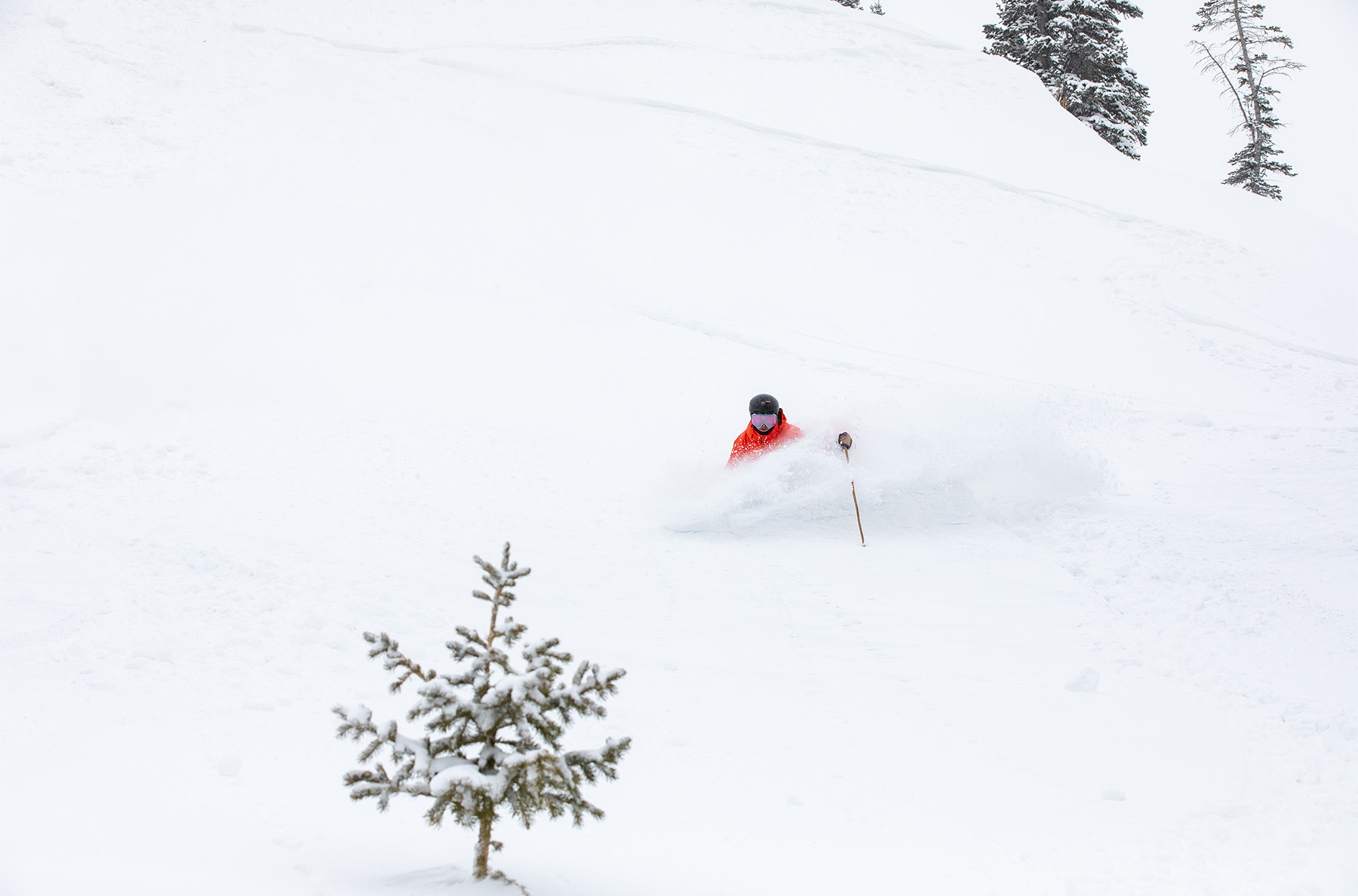
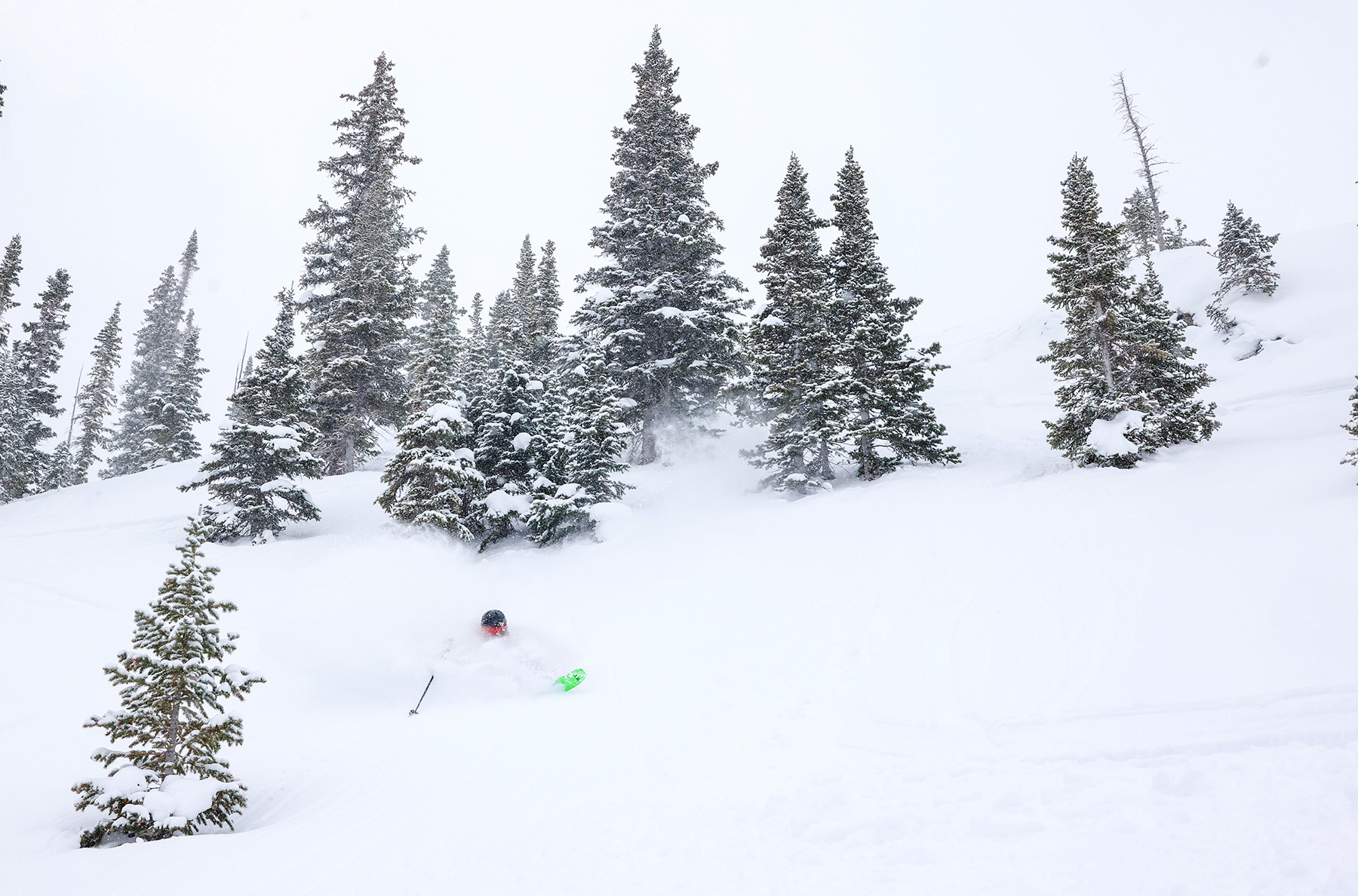
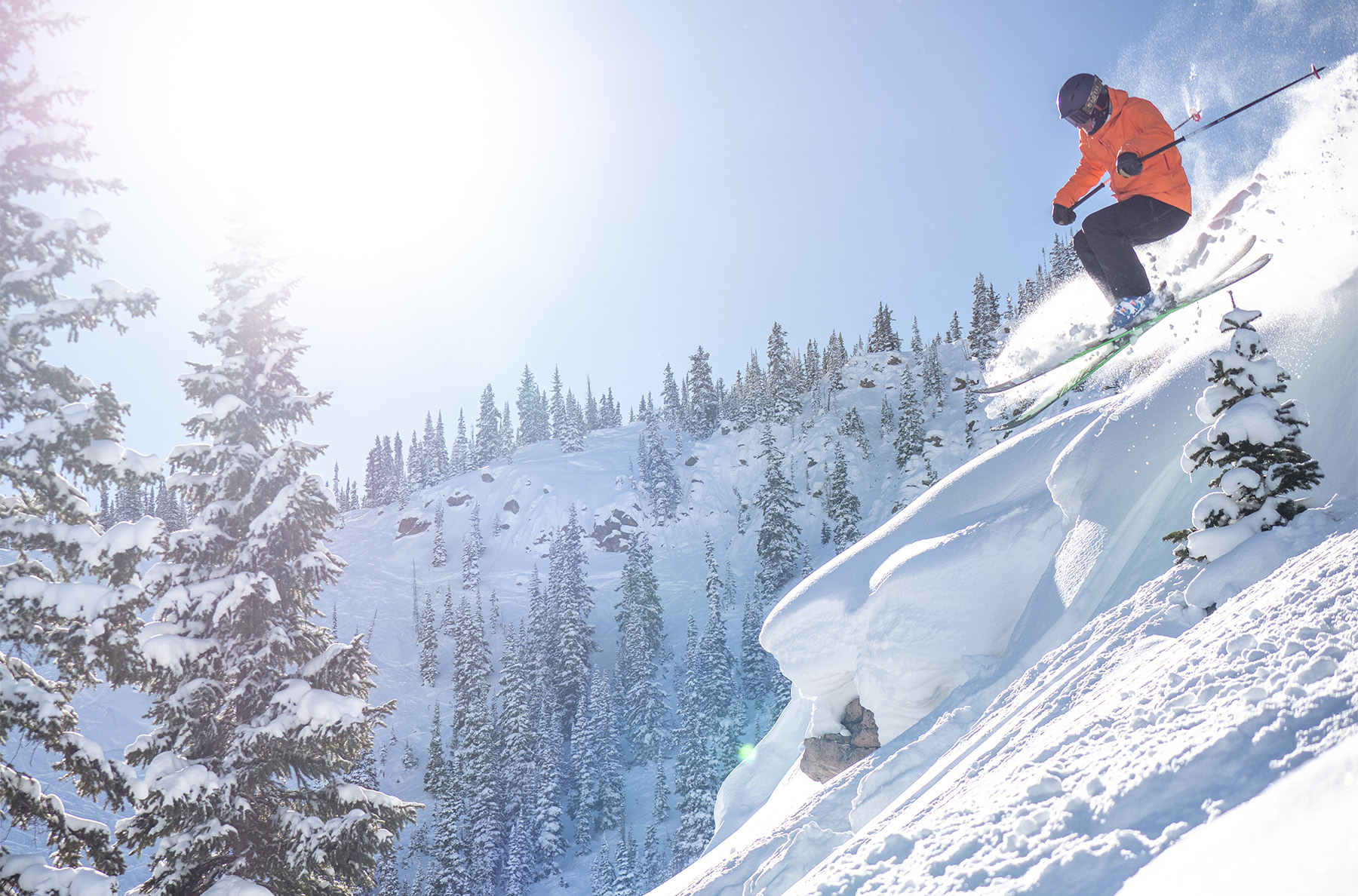
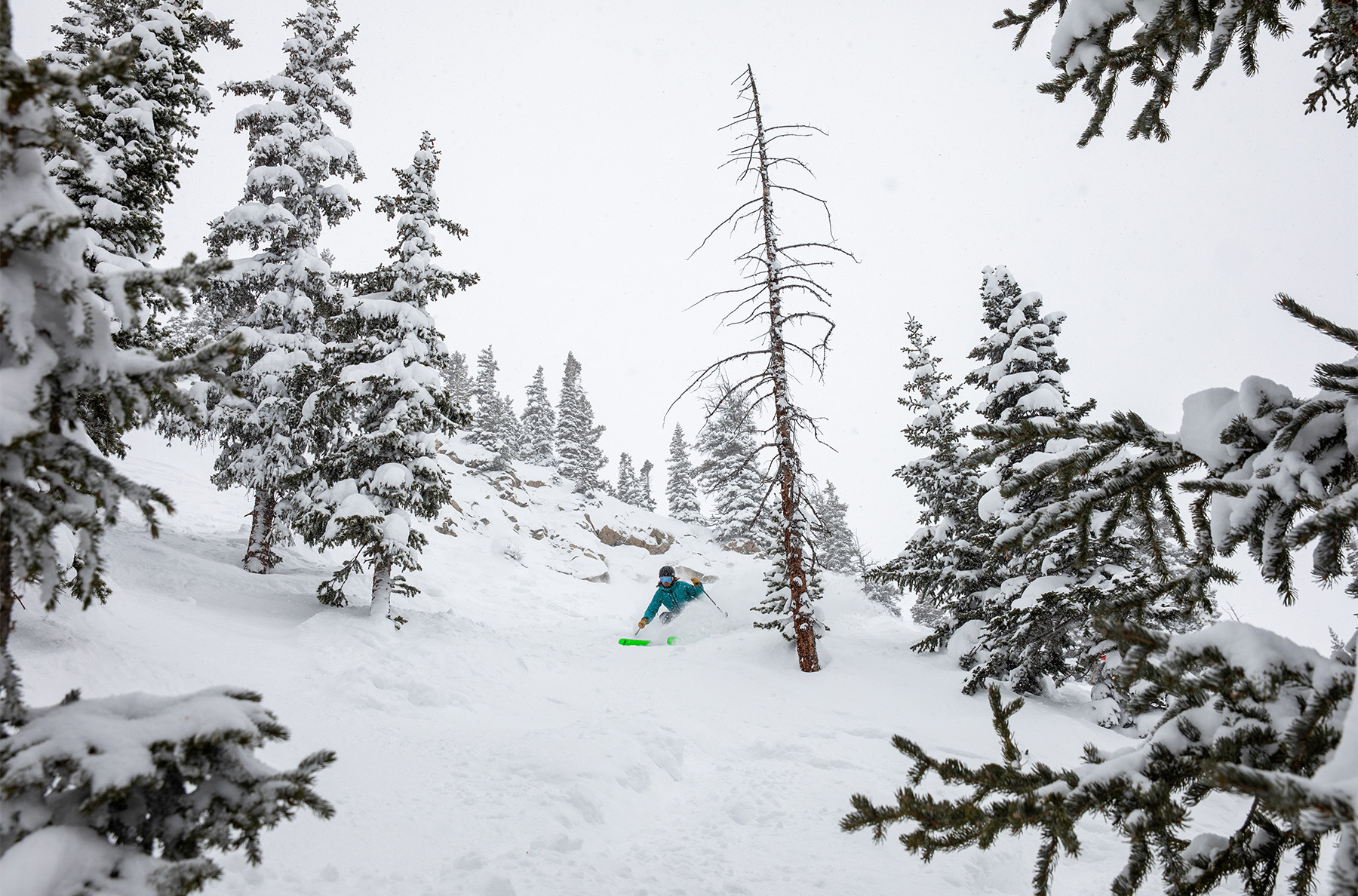
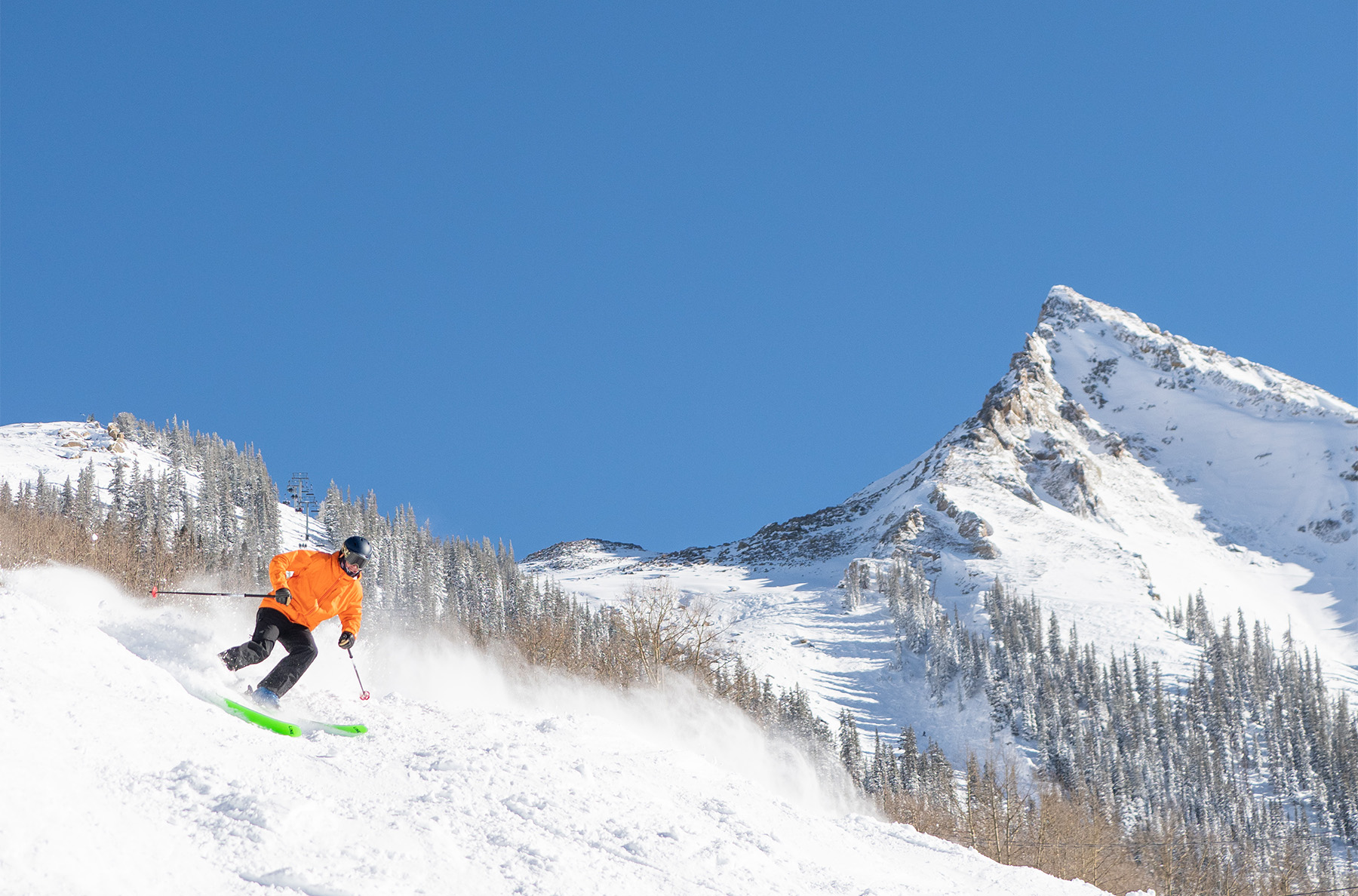
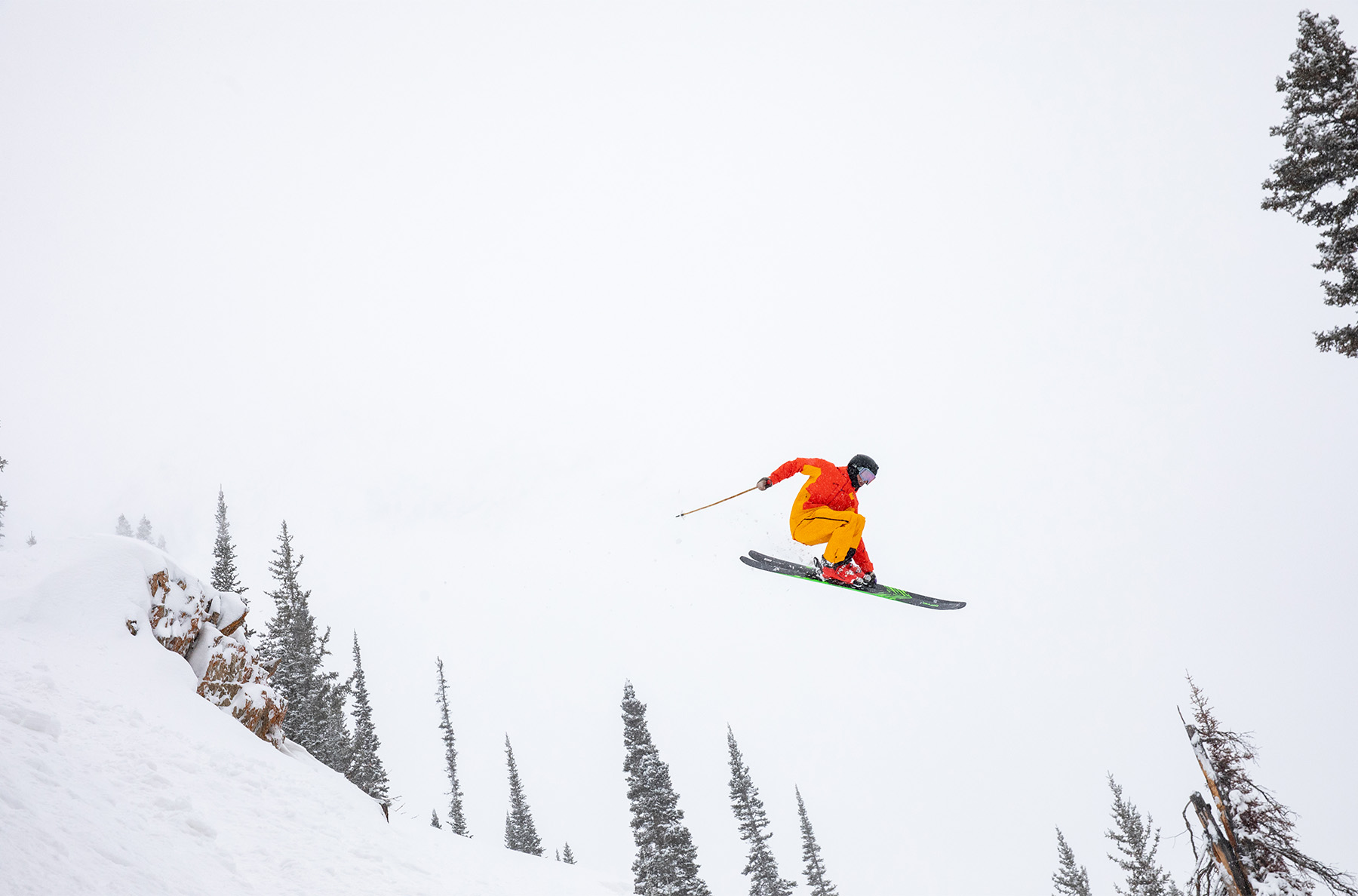
Really keen to hear more about this ski in the full review and deep dive. Comparisons with Kästle ZX115, Rossi Sender Squad, BlackOps 118, Anima, Koala 118, Dynastar M-Free 118 and no doubt a bunch of others, will be interesting. Also be great to get Jonathan’s take as it seems to have a bunch of traits that might suit him. Any idea on what the 192 weighs?
Totally, those should all be good comparisons.
I’d guess the 192 weighs around 2400 grams, but we won’t know for sure unless we can weigh a physical pair.
I’m looking for that stable and playful ski that makes very tight technical terrains easy, and doesn’t have you feel like you need to slow down after you get past a chute.
The Blade Optic 114 could work for you, but it’s hard to know for sure without getting to know you better as a skier. Consider becoming a Blister Member, then fill out our Personalized Gear Recommendations form, and we’d love to help you get on the skis that are right for you.
You might want to look into the Blizzard Rustler 11.
I called Line, they said the Rec mount point is -6.0. Every company I’ve talked to, every website, states -6.0 but you guys say it’s -7.8, that’s a massive difference. Do you know how you’re getting your measurement when the manufacturer, Line, themselves confirmed to me that it is indeed, -6.0? Thanks!
I’m glad you asked, Dusty.
Line and K2 (and probably some other companies I’m forgetting about) measure their mount points differently than we do. They measure their mount points from the “core center” of the ski, which is the middle of the running length of the ski.
We measure all of our mount points the same to keep everything comparable. The way we measure is by measuring back from the “true center” of the ski, which is the middle of the ski as measured by a straight-tape pull from tip to tail.
Thanks for the info Dylan, very interesting. I’m considering adding the Optic 114 to my quiver as a Utah powder ski for more open terrain, not tight trees, but something that also is really strong blasting through chopped pow. You know Eric Pollards new ski company called Season? I’ve got a pair of the Season Pass ski’s, which are nice & wide tip & tail and 116 underfoot, great float, great ski, I’ve really liked them on soft snow days but as I stated above, am looking for an additional ski that has some more tip & tail rocker, is stronger, that can just charge and smash through chop and am looking to see if the Optic 114 will fit that bill.
Wait, that seems a bit crazy to me. Shouldn’t you be going off what the manufacturer of the ski is stating as the center to keep everyone reading operating on the same playing field? How is someone who purchases or is thinking about purchasing the ski supposed to know that when reading your reviews?
“Keeping everyone reading operating on the same playing field” is exactly what we’re doing, and we’re doing this by using a standardized way of measuring mount points. If we measured every mount point differently according to how the manufacturer likes to do it, it would be very hard to compare skis.
Our process for measuring mount points is clearly explained in our Winter Buyer’s Guide.
Hey guys, quick question about the flex pattern. I’ve found Line skis to be kind of “hingey” moving into the shovels and tails. Are these skis similar feeling?
I’m a bit cautious about these because of how similar the metal silhouette looks to the last gen of the Rustler 11, which I really disliked because of that “hingey” feeling flex pattern.
Basically, I prefer a rounder, smoother flex pattern, and am wondering of these skis offer that.
Thanks!
After a year of skiing this ski, including opening day yesterday, I figured I’d come back and visit this review.
I think you guys nailed it. I’m 6′ 160lbs (wet) and agree with everything you all said. It’s a relatively maneuverable ski in tight spaces for how far you can open it up. It’s the best ski that I own in chop and the ski I want for fast runouts. It floats well, if not great, in deep snow.
On groomed (but still soft) snow it wants to go!! That longer radius is obvious. It takes really standing on that outside ski to get it up onto edge and bend it. Speed can get out of hand quickly if it’s crowded. You can easily release the edge and slarve your way down the hill, but what fun is that?
This ski is sticking around my garage, for now. There are days that this ski is just made for. I have the Heritage Lab FR120ST coming. I feel like it could dethrone the Blade Optic 114, but time will tell. As far as personal preferences, I don’t think this ski is quite as versatile as something like the Moment Deathwish. What the Deathwish gives up in stability it makes up for in fun all over the mountain (especially groomers). It floats about the same and is just one step down in stability despite it’s lighter weight.
Overall, the Blade Optic 114 is a really reliable partner for skiing bigger lines in soft snow and having fun while doing it. At the prices you can grab them for, why not?